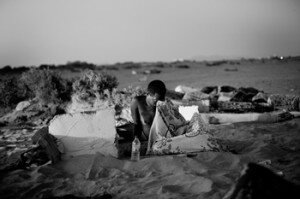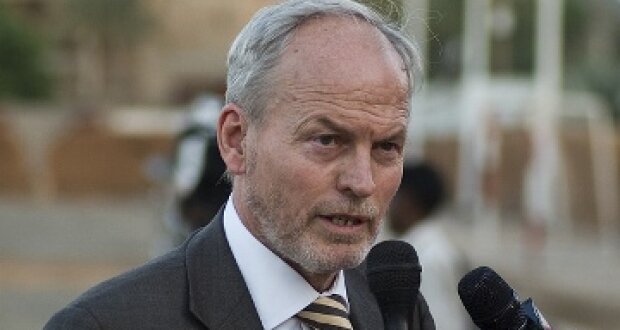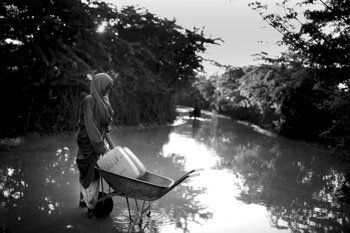 By SHANE DIXON KAVANAUGH (New York Times) Last November, the Danish photographer Jan Grarup traveled to East Africa to document refugees as they struggle for survival. He began in the enormous refugee camp in Dadaab, Kenya, near the Somali border. He ended three weeks later in Yemen.
By SHANE DIXON KAVANAUGH (New York Times) Last November, the Danish photographer Jan Grarup traveled to East Africa to document refugees as they struggle for survival. He began in the enormous refugee camp in Dadaab, Kenya, near the Somali border. He ended three weeks later in Yemen.
More than 300,000 people live in the Dadaab camp, Mr. Grarup said in a recent phone interview from Copenhagen. Meanwhile, 18,000 refugees try to cross the Gulf of Aden into Yemen each month. They have nowhere else to go.
CLICK HERE TO SEE THE AMAZING PHOTOS OF Mr Grarup:
“These people have two choices in their lives,†Mr. Grarup said. “One is to try and escape, to get out. The other one is to lie down and die.â€
Mr. Grarup’s photographs reveal that even those who escape to Dadaab or to Yemen continue to face an uncertain future and inhuman conditions.
A woman in Dadaab (above) is seen up to her ankles in a pool of contaminated water. Heavy rains have flooded the camp and caused an outbreak of malaria and water-borne illness. She fills two large plastic jugs with the water.
In another photograph (on the top), a man recently smuggled across the Gulf of Aden into Yemen prepares for bed on a deserted beach. Mr. Grarup said that seeing this man was a profound and revealing moment.
“I wasn’t really sure if he was dead or alive,†he said. “But that was his home. This is what he was expecting of the future — sleeping in a hole of sand in the middle of a beach with a blanket over his head.â€
Mr. Grarup’s photographs were exhibited almost as soon as he took them. They appeared last December at the United Nations Climate Change Conference in Copenhagen, as part of an exhibit by Noor, the 10-person photo agency that Mr. Grarup helped co-found.
The exhibit, “Consequences,†captured the calamitous effects of climate change that are occurring throughout the world — from Brazil, to British Columbia, to India, to the Horn of Africa.
“The strength of the project rests within its immediacy,†Mr. Grarup said. “It has an honesty to it.â€
Mr. Grarup is no stranger to this kind of work. Over the last 20 years he has photographed major conflicts in Chechnya, Panama, Rwanda, Kosovo, Iraq, Israel, Darfur and many other places. He just spent 11 days in Haiti, and will return soon to the Horn of Africa.
“We need to look in directions where life is much harder,†he said. “I do believe that photojournalists with their hearts and minds in the right place can make a difference in terms of getting people to reflect upon conflicts and crisis situations that are going on around the world.â€
______
Source: New York Times







